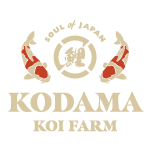Iwashita Koi Farm
Learn More About Iwashita Koi Farm
Description: Iwashita Koi Farm in Mushigame, Niigata breeds quality Asagi, Kin Kikokuryu and Kikokuryu. What makes it more famous is the production of Ginrin Asagi. Mr. Tadashi Iwashita put the Ginrin and Asagi together for the first time in 1999. He was praised for this wonderful achievement; and in addition he enjoys the challenge to always make new varieties.
Interview with Iwashita Koi Farm
Iwashita Koi Farm
by Mamoru Kodama
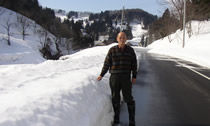 Iwashita Koi Farm has a display greenhouse two stories high on the road at the entrance of Mushigame. It has three display ponds. He breeds mainly Kawarimono such as Goshiki, Kumonryu, Ginrin Matsukawabake, Doitsu Ochibashigure, Koromo, Doitsu Goshiki, Ginrin Asagi and so forth.
Iwashita Koi Farm has a display greenhouse two stories high on the road at the entrance of Mushigame. It has three display ponds. He breeds mainly Kawarimono such as Goshiki, Kumonryu, Ginrin Matsukawabake, Doitsu Ochibashigure, Koromo, Doitsu Goshiki, Ginrin Asagi and so forth.
He is so popular that his place is always crowded with koi hobbyists in the harvesting season of autumn. But this greenhouse is not all he has, of course. He has a breeding farm in a different place, in the mountains of Nagaoka. The place is called Tomoto. He breeds Kawarimono as well as Gosanke there. Reading the trends and demands of the times, he has been challenged to create a new breed. Policy of Iwashita Koi Farm.
Kodama:
When did you start this business?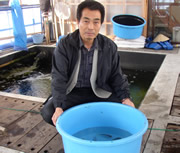
Iwashita:
It has been a while. I think almost 35 years.
Kodama:
35 years!? It is a long time, isn’t it? And you have always been challenged to create unique varieties. Why is this so?
Iwashita:
My goal is to breed an attractive koi that any koi hobbyist cannot resist. Every year at the harvesting season, Mushigame always has many koi hobbyists. Even though the store is at a very good location, at the entrance of Mushigame village, most of the koi people either used to pass here without making any stops or give it only a glance. I thought very seriously about how I could have them stop and stay at my store. I realized I must have powerful, beautiful and unusual koi to grab their attention.
Kodama:
That is right. We dealers must have koi that attract customers. Then, customers would stay and eventually purchase koi.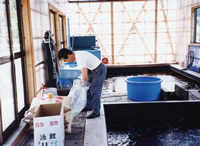
Iwashita:
Yes. So now I breed only fine quality ones of many varieties, but in small quantities.
Kodama:
What kind do you breed now?
Iwashita:
At present, I breed 13 to 15 different varieties including Gosanke, Ginrin Matsukawabake, Asagi, Ginrin Asagi, Goshiki, Kin Kikokuryu, Heisei Nishiki, Kumonryu, Utsurimono, Gin Matsuba, Aka Matsuba, Doitsu Showa.
Kodama:
Do you breed them all by yourself?
Iwashita:
No. I cannot breed them all by myself. I leave some of my breeder koi with my relatives who live in the same village and have them breed those.
Kodama:
Is there any particular variety you do not breed?
Iwashita:
I do not breed Platinum. It is because I cannot breed good Platinum at my farm. For some reason, they have red on their cheeks.
Kodama:
I see. Now tell us a little about your ponds.
Iwashita:
My place in Nagaoka is about 2.5 acres with 28 ponds and 2 large mud ponds. I have had them since 1982. I use 12 ponds for tosai. In autumn, I harvest 5000-6000 and keep 3000 in a greenhouse. Many breeders in Niigata have large mud ponds, but I think the size does not really matter. Ponds that you can easily manage and maintain are more important in breeding good koi.
Kodama:
I agree. Ginrin Asagi is one of your representative varieties. Can you talk about your famous Ginrin Asagi? What made you decide to breed this variety?
Iwashita:
It is always out of curiosity and with one simple question: what would Asagi look like with ginrin?’ I was lucky. When I posed the question, I came across a male Asagi that had ginrin by accident! I crossbred this male with a female regular Asagi. Getting the male Ginrin Asagi, instead of a female Ginrin Asagi was the secret of success. It raised the ratio of beautiful ginrin. appearance so much.
Kodama:
That sounds interesting. As a result, you finally stabilized and completed the variety of Iwashita Ginrin Asagi that made you famous.
Iwashita:
Yes. It was in 1999.
Kodama:
How many of them do you breed now?
Iwashita:
I have bred Ginrin Asagi every year since then. Naturally I keep only good ones after several cullings. Eventually, only about 1000 meet 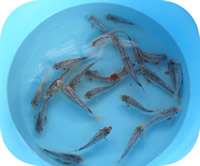 my standard and remain. I sell half to Japanese customers.
my standard and remain. I sell half to Japanese customers.
Kodama:
In other words, another half, which is only about 500, is available for hobbyists outside of Japan. This is a very premium variety, isn’t this? What is the most difficult part in breeding Ginrin Asagi?
Iwashita:
The most difficulty absolutely lies in that good ginrin is very unlikely to appear on Asagi. Because ginrin is genetically strong, varieties like Kohaku, Taisho Sanke, Showa can easily have good ginrin. But that is not the case in Asagi variety for some reason.
Kodama:
I see. How about the hi?
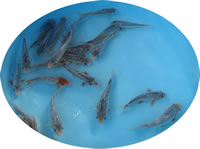
Iwashita:
Yes, they are difficult, too. Having brilliant hi on the pectoral fins, belly and yakko (cheeks) is an important factor for Asagi's beauty. But only 30% of the productions have the hi. This makes the breeding of Ginrin Asagi even more difficult.
Kodama:
This is why you can have only 1000 or so. But after severe culling, your Ginrin Asagi is definitely one of a kind with quality and beauty. They win top awards even at the All Japan Nishikigoi Show.
Iwashita:
Yes. They often win at the category of B Ginrin in All Japan Nishikigoi Show. B Ginrin is the category for all the ginrin varieties except Gosanke. So I think it is quite a tough competition and quite an honor for my koi to win at such a category.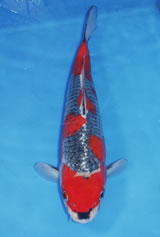
Kodama:
How about Goshiki? You have a wonderful parent for Goshiki.
Iwashita:
She is 10 years old now. The stepped pattern is beautiful. When she was 3 years old, she already showed excellence. One customer was very eager to obtain her and offered me $5,000. But I wanted to breed beautiful Goshiki like this by myself. It was my dream. So I decided not to sell her and to keep her as a parent.
Kodama:
And you made a right decision.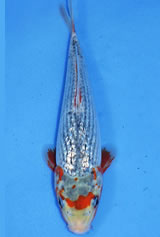
Iwashita:
I think so. Goshiki is a variety that has a Kohaku pattern on the Asagi background. And it is important in breeding Goshiki that the hi color is beautiful. Its hi design must be well-arranged and the hi quality must be high. Because the parent has such a high quality hi and superior hi pattern, the offspring won top awards at All Japan Nishikigoi Shows and proved itself for the supreme quality. It is common sense but still true that parents must be exceptional to breed high quality koi. This Goshiki has excellent hi quality and coloration. When she was 2 years old, sumi appeared on the hi a little bit. But as she grows and hi gets enhanced, the hi stands out as if it is emerging. That is the character and attractiveness of my Goshiki.
Kodama:
Ginga that you made is the variety that has ginrin on Matsukawabake, right?
Iwashita:
Yes. The idea also came from a simple question: ‘what would happen if Matsukawabake has ginrin?’ The difficult part was what to use as parents to breed this Ginrin Matsukawabake.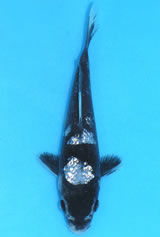
Kodama:
So tell me what did you use?
Iwashita:
The female parent was from a crossbreed of Kumonryu and Shiro Utsuri. And the male parent is Ginrin Matsuba out of Ginrin Ochibashigure, which looked very black, almost like Karasu.
Kodama:
What is the difficulty in breeding this variety?
Iwashita:
It is in the culling of fry. Though they have ginrin, most of them are Chagoi. Naturally it has the blood of Ginrin Ochiba Shigure as its ancestor; most of the fry are brown. Among the Chagoi, I select ones that have strong black and strong ginrin. And when they are Tosai, the whole body becomes black. Then as they grow, they start exposing shiroji (white background) like Matsukawabake and the ginrin stands out. It is not too exaggerated to say that almost all of the fry are dirty and not worth keeping.
Kodama:
It must be really difficult to decide which to keep and which not to.
Iwashita:
Absolutely. Experience and intuition really count in deciding which to keep. What I learned from breeding many Kawarimono is to raise them until autumn no matter how dirty they look. Believing when the bloodline is good, they should expose their potential beauty as they grow. So, I breed them carefully and patiently. Of course, it is essential that they must have qualities such as sumi and ginrin to be selected.
Kodama:
Thank you very much for your time today. Please keep up your great work. I am sure every koi hobbyist in the world looks forward to have your koi in their pond.
Video interview with Iwashita Koi Farm
Nice to meet you, I am Tadashi Iwashita, from Iwashita Koi Farm. We have been breeding koi for 55 years. The main type of koi that we breed is Kawarigoi, and it is not an exaggeration to say that it is our specialty. We have focused on breeding Kawarigoi for many decades. Many of our quality koi have been bought by Kodama Koi Farm in Hawaii and spread all over the world.
Everyone, please head over to Kodama Koi Farm in Hawaii and have a look at the koi. Thank you very much.
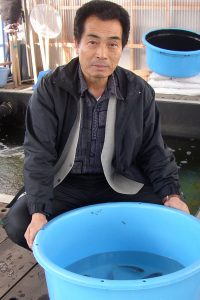
Showing all 14 results
-
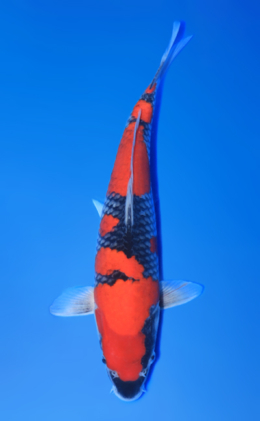
Goshiki – koi #w0203n007
$1,000.00 Add to cart -
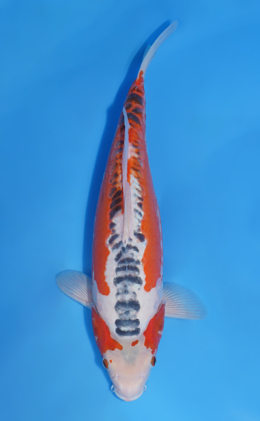
Shusui – koi #v1019n025
$500.00 Add to cart -
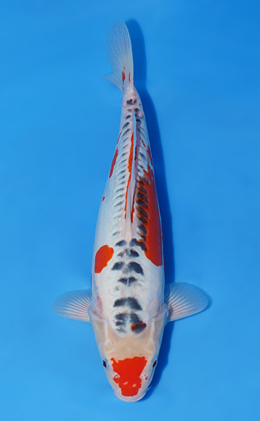
Shusui – koi #v1019n024
$500.00 Add to cart -
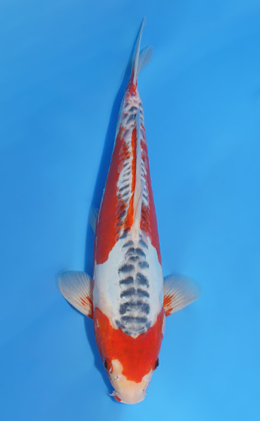
Shusui – koi #v1019n023
$500.00 Add to cart -
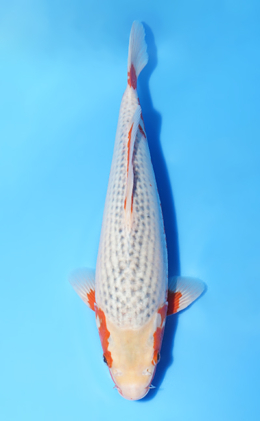
Asagi – koi #v1019n018
$500.00 Add to cart -
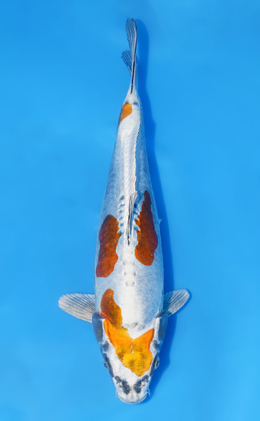
Kin Kikokuryu – koi #v1019n035
$600.00 Add to cart -
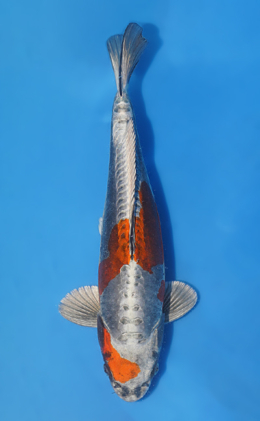
Kin Kikokuryu – koi #v1019n034
$600.00 Add to cart -
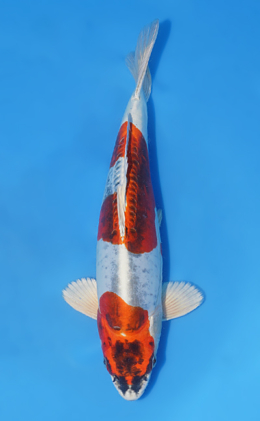
Kin Kikokuryu – koi #v1019n033
$600.00 Add to cart -
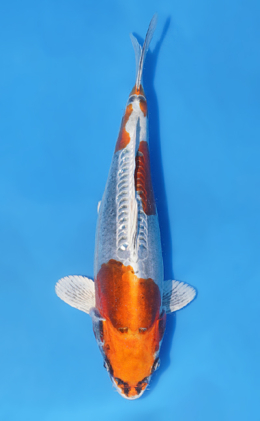
Kin Kikokuryu – koi #v1019n032
$600.00 Add to cart -
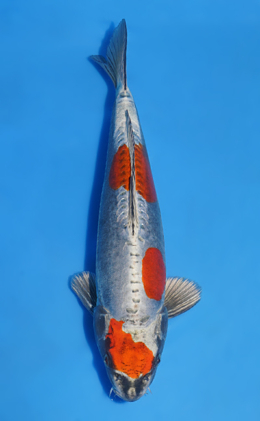
Kin Kikokuryu – koi #v1019n028
$600.00 Add to cart -
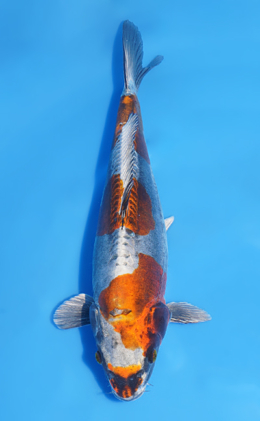
Kin Kikokuryu – koi #v1019n027
$600.00 Add to cart -
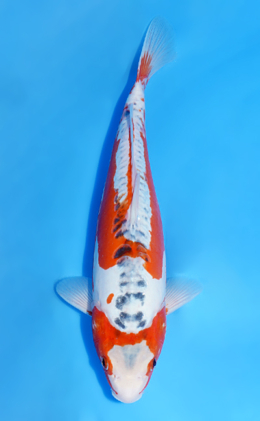
Shusui – koi #v1019n026
$500.00 Add to cart -
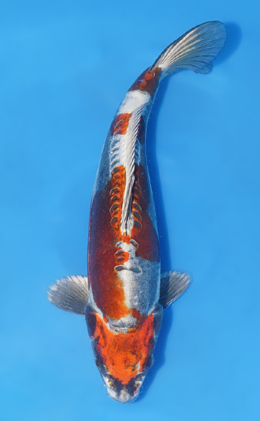
Kin Kikokuryu – koi #v1019n038
$600.00 Add to cart -
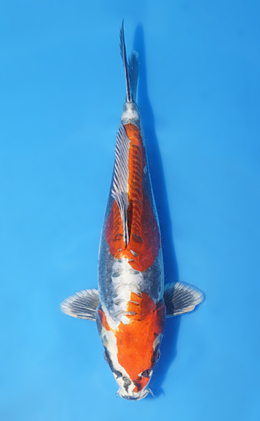
Kin Kikokuryu – koi #v1019n037
$600.00 Add to cart
Can't find the koi you're looking for? Click here to use our koi request form
Request the Koi of Your Dreams
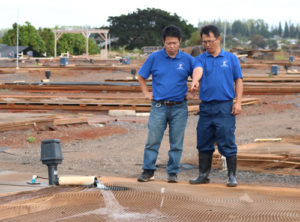
What can we help you find?
Let us know more about what you are searching for and we will look into our inventory to help you find the perfect koi. Tell us a description, variety, size range, and price range you are searching for.
We have a large stock of koi that are not listed on our website and we can also look when we are visiting Niigata, Japan. Complete this form and we will follow up with you directly.
Koi Request Form
